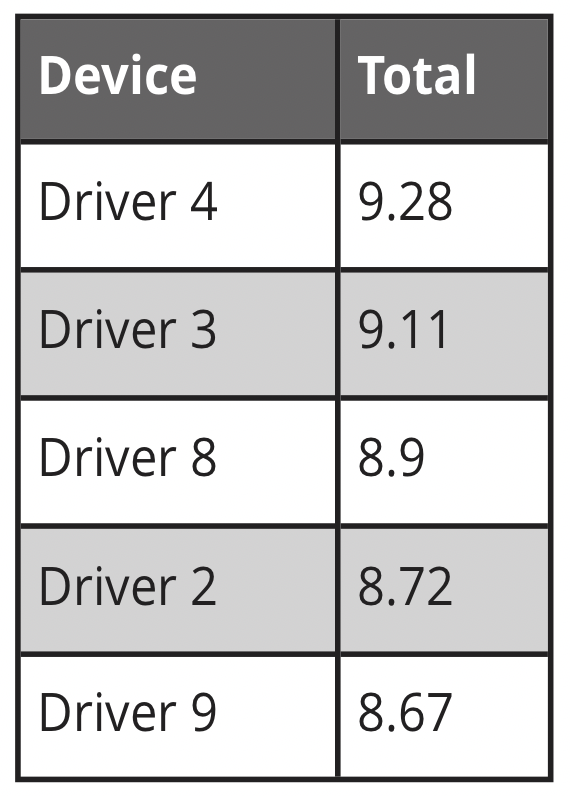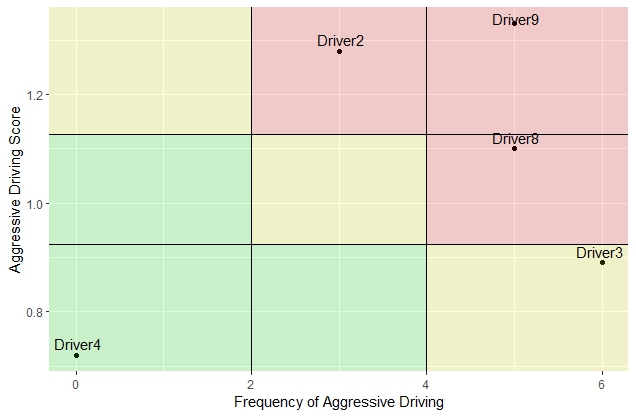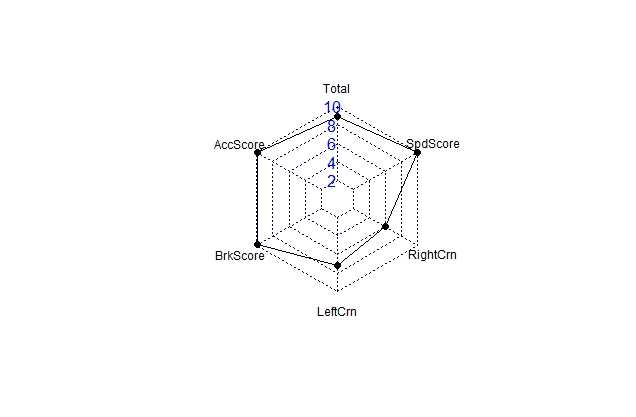With young drivers at the greatest risk of accidents on the road, eco-driving could offer a solution that promotes safer driving techniques while reducing the environmental impact
Young drivers are a high-risk group on the roads due to their lack of experience and risk-taking behaviour. Eco-driving has emerged as an effective solution that helps young drivers reduce their carbon footprint and drive more safely and responsibly. Gamification can be effective in promoting eco-driving habits in young drivers, making the learning process more engaging and enjoyable.
A high-risk group in road traffic accidents
According to the World Health Organization (WHO), approximately 1.3 million people die yearly in road traffic accidents. Road traffic accidents are also the leading cause of death in children and young adults aged five to 29.
The over-representation of young drivers in accidents is predominantly due to their inexperience and risk-taking behaviour, such as speeding, hard braking, and aggressive acceleration.
This not only puts their lives at risk but has a significant impact on the environment. According to the United States Environmental Protection Agency (EPA), the transportation sector is the leading contributor of greenhouse gas emissions. Eco-driving techniques are one way young drivers can learn to drive more safely while reducing fuel consumption and GHG emissions.
What is eco-driving?
Eco-driving involves smooth acceleration and braking, maintaining a constant speed, and avoiding excessive idling.
Studies have shown that eco-driving can result in fuel savings of up to 15%, which can translate into significant cost savings for drivers. In addition, eco-driving can help to reduce emissions of carbon dioxide (CO2), nitrogen oxides (NOx), and particulate matter (PM), which are significant contributors to air pollution.
Eco-driving can also enhance the driving range of an electric vehicle (Günther, Kacperski, and Krems, 2020). In addition to the environmental benefits, eco-driving can improve road safety by encouraing drivers to adopt a more responsible and defensive driving style.
How can we encourage eco-driving among young drivers?
Self-Determination Theory (SDT) is a broad framework for the study of human motivation and personality and argues that to foster the most volitional and high-quality forms of motivation and engagement for activities, the individual’s experience of autonomy, competence, and relatedness must be supported (Ryan and Deci 2000; 2017).
SDT further proposes that the degree to which any of these three psychological needs is unsupported or thwarted within a social context will have a detrimental impact on wellness in that setting. Therefore, motivating young drivers to adopt safe driving habits must support their autonomy, competence, and relatedness needs.
Gamification is one such technique.
Gamification refers to the use of typical elements of game mechanics (e.g., storylines, avatars, points, leader boards, feedback, and challenges) to enhance engagement and motivate individuals in non-game applications (Deterding et al. 2011). It is effective in various domains, including education, healthcare, and marketing.

Figure 1: Peer-to-peer comparison

In a gamified eco-driving application, a driver’s eco-driving ability can be recorded as a driving score that rewards safe speeds, acceleration, and braking. This score can be displayed relative to other drivers on a leaderboard. The leaderboard provides a sense of competition and social pressure, which can potentially motivate young drivers to improve their driving skills.
First, by using a leaderboard system, drivers are encouraged to be the best, thus creating a sense of community and belonging and making eco-driving a social norm.
Secondly, by providing feedback on the driver’s performance, a gamified eco-driving interface can help
reinforce positive and correct negative behaviours, thereby supporting the need for competence. Lastly, gamification can help create a sustainability culture among young drivers.
Promoting eco-driving as a fun and rewarding activity can help shift attitudes and behaviours towards more sustainable practices. This can have long-lasting benefits for the environment, as young drivers are likely to continue practising eco-driving as they grow older and become more experienced drivers.

Figure 2: Personalised feedback for driver Driver 9
Supporting research for gamification and eco-driving
In my Gamification and Transportation lab at the University of Minnesota Duluth, I track drivers’ speeding, acceleration, braking, and cornering using a telematics device plugging into the On-Board Diagnostics (OBD II) port of their vehicle. Then, the drivers log onto a website that displays their gamified driving analytics. The analytics they see are shown in Figures 1 and 2.

Figure 1 shows their analytics relative to other drivers in a cohort. Figure 1(a) shows their driving score in a leaderboard style. The driving score is a weighted average of their acceleration (AccScore), braking (BrkScore), right cornering (RightCrn), left cornering (LeftCrn), and speeding scores (SpdScore).
Their SpdScore is given the highest weight, followed by AccScore and BrkScore. The grid in Figure 1(b) is unique to my research. It assists the driver in visually making sense of their driving score. For example, for the drivers ‘FordEscape’ and ‘Driver 4’, although their scores are the same, the grid shows that Driver4 engaged in a higher frequency of aggressive driving instances than FordEscape.
Figure 2 presents personalised feedback to an individual driver; in this case, it is Driver9. Figure 2(a) shows a breakdown of the driving score. Visually, the driver can see their right cornering (‘RightCrn’) and left cornering (‘LeftCrn’) are the two areas that reduced their score. Figure 2(a) helps inform the driver where their aggressive driving habits took place.
Preliminary results showed that study participants were interested in engaging with the analytics presented to them. In addition, a reduction in aggressive driving was also observed when drivers were presented with the gamified eco-driving interface.
References
- Deterding, S., D. Dixon, R. Khaled, and L. Nacke. 2011. “From Game Design Elements to Gamefulness: Defining ‘Gamification’.” In Proceedings of the 15th International Academic MindTrek Conference: Envisioning Future Media Environments, 9–15. Tampere, Finland: Association for Computing Machinery. https://doi.org/10.1145/2181037.2181040.
- Günther, Madlen, Celina Kacperski, and Josef F. Krems. 2020. “Can Electric Vehicle Drivers Be Persuaded to Eco- Drive? A Field Study of Feedback, Gamification and Financial Rewards in Germany.” Energy Research & Social Science 63 (May): 101407. https://doi.org/10.1016/j.erss.2019.101407.
- Ryan, Richard M., and Edward L. Deci. 2000. “Self- Determination Theory and the Facilitation of Intrinsic Motivation, Social Development, and Well-Being.” American Psychologist 55 (1): 68–78. https://doi.org/10.1037/0003- 066X.55.1.68.
- 2017. Self-Determination Theory: Basic Psychological Needs in Motivation, Development, and Wellness. New York: Guilford Press.
- United States Environmental Protection Agency. 2023. “Sources of Greenhouse Gas Emissions.” April 28, 2023.

This work is licensed under Creative Commons Attribution-NonCommercial-NoDerivatives 4.0 International.


